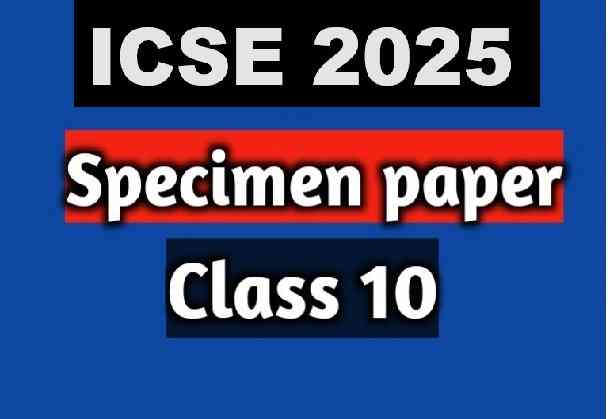MCQ Organic Chemistry for ICSE Class-10 Sec-A Sem-2 . These MCQ / Objective Type Questions is based on latest reduced syllabus according 2021-22 session on bifurcated pattern. Main motto of MCQ Type Question is cracking the next upcoming Sem-2 exam of council. Visit official website CISCE for detail information about ICSE Board Class-10 Chemistry .
MCQ Organic Chemistry Class-10 for ICSE Class-10 Sec-A Sem-2
| Board | ICSE |
| Class | 10th (X) |
| Subject | Chemistry |
| Chapter | Organic Chemistry |
| Syllabus | on bifurcated syllabus (after reduction) |
| Session | 2021-22 |
| Bifurcated | Sem-2 |
| Topic | MCQ / Objective Type Question for Sec-A |
Sec-A Sem-2 ICSE Class-10 MCQ Type Questions of Organic Chemistry

1 2-ethyl-2-methyl propane
2 2, 2-demethyl butane
3. 1,1,1-trimethyl propane
4. 2, 2-methyl butane
Answer -2, 2-demethyl butane
2. . Identify ‘A’ in the following reaction:
CH3COOH + Na2CO3 → A + CO2 + H0O
1 CH3COONa
2 CH2(Na)COOH
3 NaOH
4 NaHCO3
- 15
- 16
- 17
- 18
- CH3COOH
- C3H7OH
- HCOOH
- NaCl(aq)
Answer : C3H7OH
5. C3H8 belongs to the homologous series of
- Alkynes
- Alkenes
- Alkanes
- Cyclo alkanes
Answer : Alkanes
6. Carbon exists in the atmosphere in the form of
- carbon monoxide only
- carbon monoxide in traces and carbon dioxide
- carbon dioxide only
- coal
Answer : carbon monoxide in traces and carbon dioxide
7. Which of the following will undergo addition reactions?
- CH4
- C3H8
- C2H6
- C2H47.
Answer : C2H47.
8. When ethanoic acid is treated with NaHCO2 the gas evolved is
- H2
- CO2
- CH4
- CO
Answer : CO2
9. Ethanol on complete oxidation gives
- acetic acid/ethanoic acid
- CO2 and water
- ethanal
- acetone/ethanone
Answer : CO2 and water
- Chloromethane, substitution
- Dichloromethane, addition
- Trichloromethane, elimination
- Tetra chloro methane, combustion
- Carbon
- Oxygen
- Sulphur
- Phosphorous
- Bromine water
- Chlorine water
- I2
- HCl
- 4
- 5
- 6
- 7
Answer : 6
14. Why does carbon form compounds mainly by covalent bonding?
- There are four electrons in the outermost shell of carbon.
- It requires large amount of energy to form C4+ or C4sup>4-.
- It shares its valence electrons to complete its octet.
- All the above.
Answer : All the above.
15. Addition reactions are undergone by
- saturated hydrocarbons (alkanes)
- only alkenes
- only alkynes
- both alkenes and alkynes
Answer : both alkenes and alkynes
16. Identify ‘A’ in the following reaction:
CH3COOH + Na2CO3 → A + CO2 + H0O
- CH3COONa
- CH2(Na)COOH
- NaOH
- NaHCO3
Answer : CH3COONa
17. Which of the following belongs to homologous series of alkynes?
C6H6, C2H6, C2H4, C3H4.
- C6H6
- C2H4
- C2H6
- C3H4
Answer : C3H4
18. Which of the following statements are correct for carbon compounds?
(i) Most carbon compounds are good conductors of electricity.
(ii) Most carbon compounds are poor conductors of electricity.
(iii) Force of attraction between molecules of carbon compounds is not very strong.
(iv) Force of attraction between molecules of carbon compounds is very strong.
- (ii) and (iv)
- (ii) and (iii)
- (i) and (iv)
- (i) and (iii)
Answer : (ii) and (iii)
19. Which of the following is known as Zero calorie sugar?
Answer : Sucralose
20. Which of the following polymer is used to make Bullet proof glass?
Answer : PMMA
21. Which acid is the building block of protein molecules?
Answer : Amino acids
22. Give the IUPAC name of CH3COOC2H5.
- Ethyl ethanoic acid
- Butanoate
- Ethyl ethanoate
- Etyl methyl carboxylic acid
Answer : Ethyl ethanoate
23. The firSt member of the alkyne homologous series is
- propyne
- ethyne
- methane
- ethene
Answer : ethyne
24. In diamond, each carbon atom is bonded to four other carbon atoms to form
- a hexagonal array
- a rigid three-dimensional structure
- a structure in the shape of a football
- a structure of a ring
Answer : a rigid three-dimensional structure
- CH4 and C2H4
- CH3OH and CH3Cl
- C2H5OH and C3H7OH
- CH3OCH3 and C2H5OH
- CH3 and 12u
- CH2 and 12u
- CH3 and 14u
- CH2 and 14u
- They have same crystal structure
- They have same degree of hardness
- They have same electrical conductivity
- They have same chemical properties.
- presence of hexagonal rings
- presence of ions
- presence van der waal forces
- presence of free electron
29. The difference in the formula and molecular masses of CH3OH and C2H5OH is
- CH3 and 16u
- CH2 and 14u
- CH4 and 18u
- CH3 and 16u
Answer : CH2 and 14u
30. Which of the following statements about graphite and diamond is true?
- They have the same crystal structure
- They have the same degree of hardness
- They have the same electrical conductivity
- They can undergo the same chemical reactions
Answer : They can undergo the same chemical reactions
31. Which type of rubber Ebonite is?
Answer : Highly vulcanized rubber
32. Who among the following is considered as the father of organic chemistry?
Answer : Friedrich Wohler
33. Which of the following polymer is thermosetting polymer?


